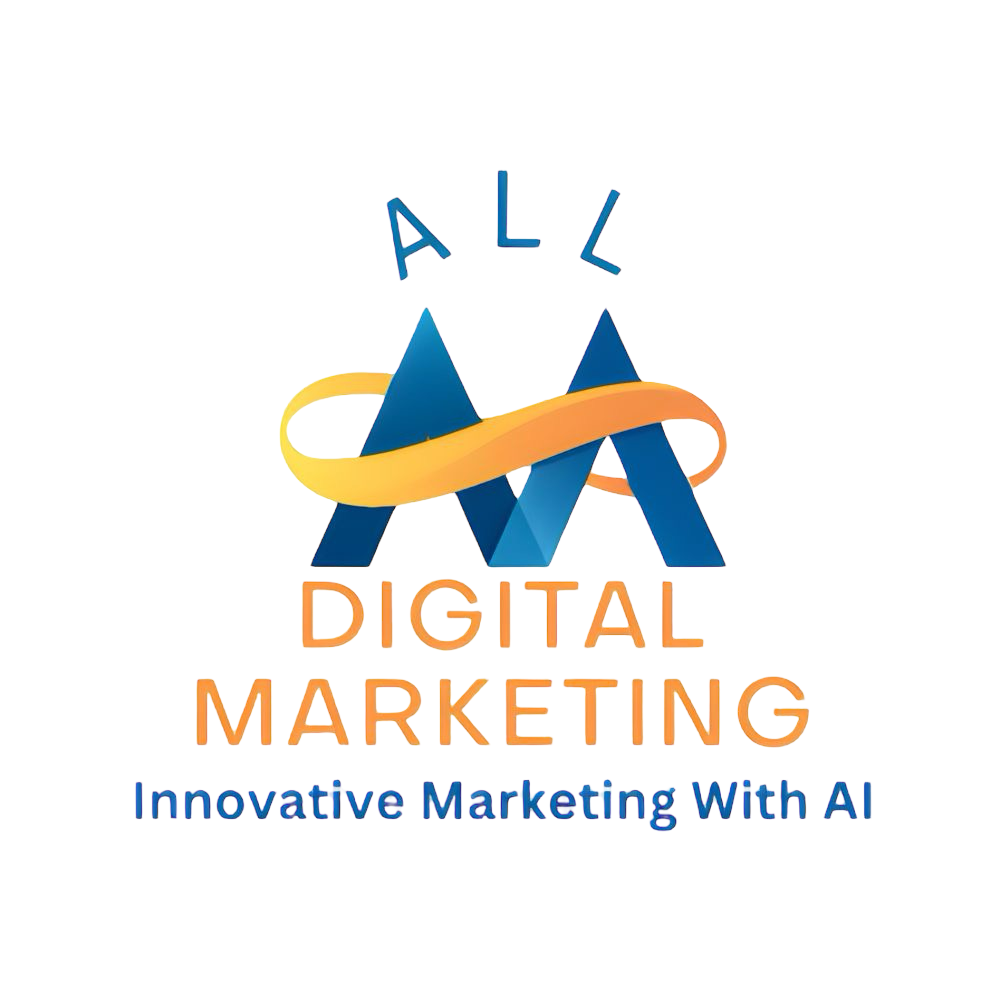Creating content that truly stands out in today's crowded digital world is like trying to get noticed at a bustling market – you need more than just a loud voice. You need something captivating, something that makes people stop, listen, and, most importantly, share. This is where the magic of "link bait" comes in. It's not about tricking anyone; it's about crafting content so valuable, so intriguing, so utterly irresistible that others can't help but link to it, share it, and talk about it.
Key Takeaways
Link bait isn't a trick; it's a magnet. It's about creating content so valuable and engaging that other websites naturally want to link to it.
Focus on benefits, not just features. Show your audience how their lives will improve, rather than simply listing what your product or service does.
Tap into emotions. Inspire feelings of success, recognition, or financial freedom to motivate action.
Create urgency (when appropriate). Limited opportunities can encourage immediate engagement.
Leverage social proof. Show people that others are already benefiting from what you offer.
Balance information with inspiration. Offer just enough expertise to be helpful, then inspire them to take the next step.
Answer questions directly. Use common questions to structure your content, making it Google AI-friendly.
Tell stories. Stories make complex ideas easy to understand and remember, fostering a deeper connection.

Unlocking Your Content Superpower: Why "Link Bait" Will Transform Your Business
Have you ever stumbled upon an article online that was so insightful, so thought-provoking, or so incredibly useful that you immediately felt the urge to share it with everyone you know? Maybe you even thought, "Wow, I need to save this!" That feeling, that undeniable pull to spread the word, is the essence of compelling "link bait" assets. It's not a sneaky tactic; it's a powerful marketing strategy that gets other websites to naturally link to your content, like a magnet attracts iron filings. These links, also known as "backlinks," are like votes of confidence from other websites, telling Google that your content is valuable and trustworthy. The more high-quality backlinks you have, the higher your content ranks in search results, bringing more eyes to your brand and more potential customers to your door.
The Google Code: What Makes Content Rank?
Google's goal is to give searchers the best answer to their questions. To do this, Google's algorithms (think of them as super-smart digital detectives) look for several things when deciding what content to show at the top of their search results:
Relevance: Does your content directly answer the user's question or provide information on their chosen topic?
Quality and Depth: Is your content well-researched, accurate, and comprehensive? Does it offer unique insights or go beyond surface-level information?
Authority (E-E-A-T): Does your content demonstrate Experience, Expertise, Authoritativeness, and Trustworthiness? This means showing that you know your stuff, are a reliable source, and can be trusted to provide accurate information. Think of it like this: if you needed heart surgery, would you trust a random person off the street or a highly experienced, board-certified surgeon? Google wants to show you the "surgeon" of information.
User Experience: Is your content easy to read and navigate? Does it load quickly on all devices? Is it visually appealing?
Engagement: Do people spend time on your page? Do they share it or link to it? This tells Google your content is valuable.
Keywords: These are the words and phrases people type into Google. When you use the right keywords naturally in your content, Google understands what your content is about and can show it to the right people.
For instance, if someone types "best dog food for new puppy" into Google, Google wants to show them an article that clearly and expertly answers that question, perhaps written by a veterinarian or an experienced pet store owner, and is easy to read on their phone.

Beyond "How-To": Igniting Action Through Storytelling
Many articles simply tell you how to do something. While helpful, they often fall short of inspiring true change. Our goal is to create content that encourages your audience to say "YES" to themselves – a "yes" to a better future, a "yes" to solving a problem, a "yes" to taking that crucial next step with your business.
This is where the magic of "action-driven" content comes in. It's about painting a picture of what's possible, not just explaining the steps.
"The greatest marketing is never about what you sell, but about the story you tell." — Seth Godin
Let's imagine you own a local plumbing business. Instead of a dry "How to Fix a Leaky Faucet" guide, you could share a story:
Focus on Benefits, Not Just Features: Instead of saying, "Our expert plumbers use advanced leak detection technology," you might say, "Imagine coming home to a perfectly dry bathroom, knowing your water bill is finally under control, and feeling the peace of mind that comes with a home free from hidden leaks." Here, the "feature" is the technology, but the "benefit" is the dry bathroom, lower bill, and peace of mind.
Use Emotional Triggers: "Remember that nagging drip, drip, drip sound? That little annoyance that stole your peace and made you worry about water damage? Picture yourself finally reclaiming your quiet home, enjoying a relaxing evening without the constant anxiety of a burst pipe." This appeals to the desire for peace and comfort, and the fear of a costly problem.
Create a Sense of Urgency: "For the next 48 hours, we're offering a free leak inspection with any booked repair. Don't let a small drip turn into a flooded nightmare – secure your peace of mind today!" This encourages immediate action by highlighting a limited-time offer.
Provide Social Proof: "Just last week, we helped Maria in Billerica save $300 on her water bill by fixing a hidden leak she didn't even know she had. Join the hundreds of local homeowners who trust us to protect their homes and their wallets!" This shows that real people are benefiting from your service.
This type of content goes beyond just facts; it stirs emotions and shows the reader a desirable outcome, inspiring them to take action.
Building Your Content Empire with Compelling Link Bait Assets
To get Google to love your content and to make your audience say "YES!", we need to strategically craft "link bait assets." These are pieces of content designed to be so valuable and interesting that others want to link to them.
Here's how we create these powerful assets:
1. Finding the Right Questions: Unlocking Google's AI Insights
Google's AI, including its AI Overview and semantic search, is getting smarter every day at understanding what people really want to know. The key is to speak its language. We do this by finding the questions your potential customers are already asking.
-
Listen to Google's Whisper: Go to Google and type in a broad keyword related to your business. For example, if you're a local bakery, type "best bread bakery." Then, scroll down to the "People Also Ask" (PAA) section. This section is a goldmine of real questions people are typing into Google.
Example: A local pet groomer might type "dog grooming tips" and find questions like "How often should I groom my dog?", "What's the best brush for a Golden Retriever?", or "Can I groom my dog at home without professional tools?"
Tools to the Rescue: Tools like AnswerThePublic can show you a visual map of questions people are asking around a keyword. Imagine typing "digital marketing" and seeing a web of questions like "what is digital marketing good for," "how digital marketing works," and "why digital marketing is important." These are the precise questions we want to answer.
2. Answering Clearly and Concisely: The Featured Snippet Sweet Spot
Google loves clear, direct answers, especially for its "Featured Snippets" (those handy little boxes at the top of search results that give you a quick answer without clicking). Aim for answers that are around 40-60 words.
Example: For the question "What's the best time to post on social media for engagement?", a concise answer might be: "The ideal posting times vary by platform and audience, but generally, early mornings and late afternoons on weekdays see higher engagement. Experiment with your specific audience to find peak times."
3. Optimizing Your Content: Speaking Google's Language
Once you have your questions and answers, it's about structuring your content so Google (and humans!) can easily understand it.
-
Headings are Your Friends: Use clear headings like H2 (main sections) and H3 (subsections) to organize your article. Place the question itself as an H2 or H3, followed immediately by your concise answer.
Example: An article titled "Your Guide to Healthier Pet Grooming" could have a subheading: "### How Often Should I Groom My Dog?" followed by the 40-60 word answer.
Keywords, Naturally: Sprinkle your main keywords (like "link bait assets," "content marketing strategy") and related terms ("SEO ranking," "digital advertising," "audience engagement") throughout your article. Think of it like adding flavor to a dish – just enough to make it delicious, but not so much it's overpowering. Avoid repeating the same word over and over, as Google sees this as "keyword stuffing" and won't like it.
4. Using Structured Data: Giving Google a Cheat Sheet
This sounds technical, but it's really like giving Google a special cheat sheet about your content. FAQ schema markup is a simple code you can add to your website that tells Google, "Hey, this part of my page answers these specific questions!" This significantly increases your chances of showing up in the "People Also Ask" section.
Example: A business answering "What are the benefits of local SEO?" could use FAQ schema to highlight this question and its answer directly to Google.
5. Engaging with Storytelling: Making Information Memorable
This is where your inner storyteller shines! Instead of just listing facts, weave them into a narrative. People remember stories far better than dry information.
Example: Instead of saying, "Our accounting software automates tax preparation," tell the story of Sarah, a small business owner who used to spend sleepless nights wrestling with receipts. "Maria felt overwhelmed by tax season, her desk buried under a mountain of invoices. But then she discovered our easy-to-use accounting software. Now, she spends less than an hour a week on her books, giving her more time to focus on growing her business and enjoying her evenings with her family. Our secret? It automates tax preparation, freeing up her valuable time and peace of mind." See how the story makes the benefit tangible?
See How Digital Marketing All Can Drive More Traffic to Your Website
Brand Voice Strategy: Let our team help you create your unique brand voice to attract your ideal customer. This means finding the perfect way your business "talks" to your customers, making sure it sounds consistent and appealing everywhere.
Market Growth Opp Research: Let our team show you where you can gain additional traffic that you are missing. We'll uncover hidden opportunities for your business to reach more people.
Local SEO: Unlock more SEO traffic. See real results. Dominate your local market. We'll help your business show up prominently when people search for services or products in your area.
Dominate Google: Let us get your company to the top of Google. We'll use our expertise to help your business rank highly in search results.
Competitive Link Analysis: Know what your competitors are doing. We'll peek behind the curtain to see how your rivals are getting their online visibility.
Geo-Targeting: Let us find your customers in your desired location. We'll pinpoint where your ideal customers are so your marketing efforts reach them directly.
Content Marketing: Our team creates epic content to be shared, generate links, and attract traffic. We know the secret recipe for success. We'll craft engaging stories and valuable information that people naturally want to share.
Paid Media Advertising: Effective paid strategies with clear ROI. You pay per result with us. We'll help you get quick wins with targeted ads, ensuring you get a good return on your investment.
Blogging Services: Let us create a blog that will help you rank. Our team will write compelling articles that attract visitors and boost your search engine standing.
Search Box Optimization: Owning a keyword in your local area is the best way to dominate your local market. We'll help you become the go-to answer for specific searches in your community.
Search Price Optimization: Not only can you own the keyword in your local area and nationally, but you can control your advertising cost by getting out of the price war that exists in pay-per-click advertising and achieve a higher ROI. We'll help you spend smarter, not just more, on your online ads.
Marketing Consulting: Develop tailored strategies to grow your brand and maximize impact. We'll work with you to create a custom roadmap for your business's marketing success.
Real-World Success Stories: Your Inspiration to Act
Let's see how this approach transforms businesses:
The Flourishing Local Coffee Shop: A charming café in a bustling city wanted to be the first choice for "best coffee shop downtown." Instead of just listing their coffee types, they published a blog post titled "The Secret Behind Our Award-Winning Roast: A Journey from Bean to Brew." This article, rich with visuals and a story of their founder's passion, landed a Featured Snippet for "best coffee in [city name]" and saw a 15% increase in foot traffic within a month, with many new customers mentioning they found them through Google.
The Inspiring Fitness Coach: A personal trainer specialized in at-home workouts. Instead of just offering "exercise plans," they created a piece titled "From Couch Potato to Confident: How Emily Transformed Her Life (and Yours Can Too!)." This story, coupled with a 50-word answer to "How to start a fitness routine at home?" and a clear call to action, appeared in the PAA section, driving 200 new sign-ups for their online coaching in three months.
The Plumber's Plumbing Prowess: A local plumbing service often got calls for simple clogs. They published an article, "The Unsung Heroes of Your Home: How a Simple Drain Cleaning Can Save You Thousands," which included a clear, step-by-step answer to "How to unclog a drain without chemicals?" and a story of a family who avoided major pipe damage by addressing a small issue early. Their PAA appearance led to a 25% boost in service calls, with many clients appreciating their helpful advice and then booking their professional service.
These examples show that when you craft content that answers people's questions, tells a compelling story, and inspires them to imagine a better outcome, you don't just get clicks – you get customers.

Frequently Asked Questions
Q: What exactly is "link bait" and why do I need it? A: "Link bait" is super valuable and interesting content you create that makes other websites want to link to it. Think of it like a delicious treat that everyone wants to share. You need it because these links (called "backlinks") are like votes of confidence for your website from other trusted websites. The more votes you have, the higher Google ranks your content, bringing more people to your business.
Q: How can I make my content more engaging for my audience? A: To make your content engaging, focus on telling stories instead of just listing facts. Use examples that your audience can relate to, and make them feel an emotion – like excitement, relief, or inspiration. Show them how your solution can make their life better, not just what it does.
Q: What is E-E-A-T and why is it important for my content? A: E-E-A-T stands for Experience, Expertise, Authoritativeness, and Trustworthiness. Google uses this to decide if your content is reliable. It's important because Google wants to show its users the most accurate and trustworthy information. To show E-E-A-T, share your knowledge, cite reliable sources, and make sure your information is correct and up-to-date.
Q: How do I know what keywords to use in my content? A: Keywords are the words and phrases people type into search engines. You can find out what keywords to use by looking at Google's "People Also Ask" section for your topic, or by using free tools like Google Keyword Planner. The goal is to find words people are searching for that are related to what you offer.
Q: What's the difference between "how-to" content and "action-driven" content? A: "How-to" content gives step-by-step instructions. "Action-driven" content, on the other hand, inspires people to take a step forward by focusing on the benefits and possibilities that your product or service offers. It paints a picture of a better future, making them want to take action.
Your journey to marketing mastery doesn't have to be a confusing maze. By focusing on creating compelling link bait assets that truly resonate with your audience and align with what Google's smart algorithms are looking for, you're not just creating content – you're building a launchpad for your business. Imagine your website not just as a place people visit, but as a beacon, drawing in the exact customers you dream of serving, day after day.
I hope you enjoy reading this blog post. If you want to be our next success story, have my team do your marketing. Click here to book a call!
 Add Row
Add Row  Add
Add 








Write A Comment